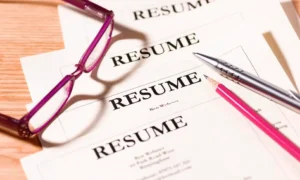Crossword puzzles have been a beloved pastime for over a century, captivating puzzle enthusiasts with their blend of wordplay, knowledge, and problem-solving skills. From their humble beginnings in newspapers to their modern-day digital counterparts, crossword puzzles have evolved significantly, becoming a global phenomenon that challenges minds across all generations. Let’s take a journey through the fascinating history of crossword puzzles, from print to apps.
The Origins: A Simple Word Puzzle is Born
The first recognized crossword puzzle appeared on December 21, 1913, in the New York World newspaper, designed by British-born journalist Arthur Wynne. Unlike the crossword puzzles we see today, this original version was diamond-shaped and lacked the black squares we associate with modern puzzles. Wynne called his creation a “word-cross,” a term that later evolved into “crossword” due to a printing error.
Wynne’s puzzle quickly gained popularity, and soon, more newspapers began to feature crosswords. Readers loved the challenge and mental stimulation that these puzzles provided, and they became a regular part of daily life for many. This marked the beginning of what would become a worldwide phenomenon.
The Boom in the 1920s and 1930s
The 1920s saw an explosion of crossword puzzle popularity in the United States. In 1924, Simon & Schuster published the first-ever book of crossword puzzles, launching what would become a long-standing craze. This collection came with a pencil attached, signaling its intent as an interactive, fun activity for readers.
Crosswords were not only seen as a form of entertainment but also began influencing culture. Newspapers and magazines started printing more puzzles, and people of all ages embraced them as a daily challenge. The craze even led to new words entering the English language, such as “crossworder,” referring to those who regularly engaged with the puzzles.
In the 1930s, The New York Times, now considered the gold standard for crossword puzzles, initially resisted publishing them, viewing them as a passing fad. However, in 1942, amidst the somber context of World War II, the Times introduced its first crossword, providing a welcome mental distraction from the difficulties of wartime. It soon became an essential part of the paper’s Sunday edition, and later, the daily editions as well.
Crosswords as a Cultural Phenomenon
Crossword puzzles continued to capture the imagination of the public throughout the 20th century. They were featured in novels, films, and even educational curriculums as tools to improve vocabulary and critical thinking. Many famous personalities became known for their love of crosswords, including American author Stephen Sondheim, who created cryptic crosswords for magazines.
One of the unique aspects of crossword puzzles is the varying difficulty levels. In the United States, Monday puzzles in major newspapers like The New York Times are typically the easiest, with the difficulty increasing throughout the week, culminating in a notoriously tricky Saturday puzzle. This structured progression encourages solvers to keep improving their skills, making the puzzles accessible to both beginners and seasoned pros.
The Digital Revolution: Crossword Puzzles in the Modern Age
The advent of computers and the internet in the late 20th century brought a significant transformation to crossword puzzles. In the 1990s, software was developed to help crossword constructors design puzzles, making the creation process faster and more efficient. Will Shortz, the legendary crossword editor for The New York Times, helped steer this transition, ensuring that the traditional appeal of the crossword remained intact even in the digital age.
With the rise of smartphones and mobile apps in the 21st century, crossword puzzles found a new home on screens. Crossword apps, such as Crosswords With Friends, NYT Crossword, and Wordscapes, became hugely popular, allowing players to solve puzzles on the go. These apps offered an interactive experience, including timed challenges, hints, and daily puzzles. The convenience of apps made crosswords accessible to an even wider audience, ensuring their survival in a rapidly changing digital landscape.
If you want to enjoy solving puzzles on the go, you can try a free online crossword puzzle to sharpen your skills and have fun!
The Future of Crossword Puzzles
As we look ahead, the future of crossword puzzles seems brighter than ever. The rise of artificial intelligence (AI) and machine learning has already influenced crossword puzzle construction. Tools like Crossword Compiler and Cruciverbalist’s Aid use AI to suggest clues and words, helping constructors design increasingly complex and creative puzzles.
Additionally, crosswords are becoming more inclusive. New constructors are bringing fresh perspectives, creating puzzles with diverse themes and clues that reflect modern culture, languages, and experiences. This evolution ensures that crosswords remain relevant and engaging for the next generation of solvers.
Conclusion
From newspapers to apps, the journey of crossword puzzles has been one of constant evolution, yet their essence remains the same—an engaging challenge that sharpens the mind. Whether printed on paper or glowing on a screen, crossword puzzles have stood the test of time, proving that the human love for wordplay and problem-solving is truly timeless. As we continue to solve, one clue at a time, we’re not just playing a game—we’re partaking in a century-old tradition that continues to thrive in the digital age.
Read More From Techbullion

































